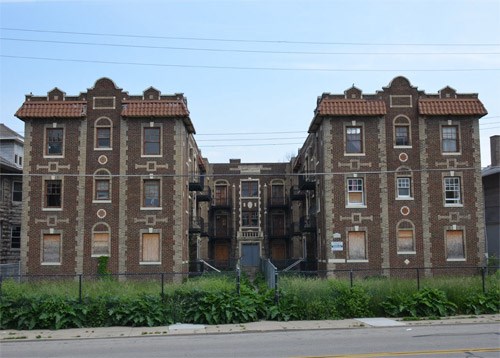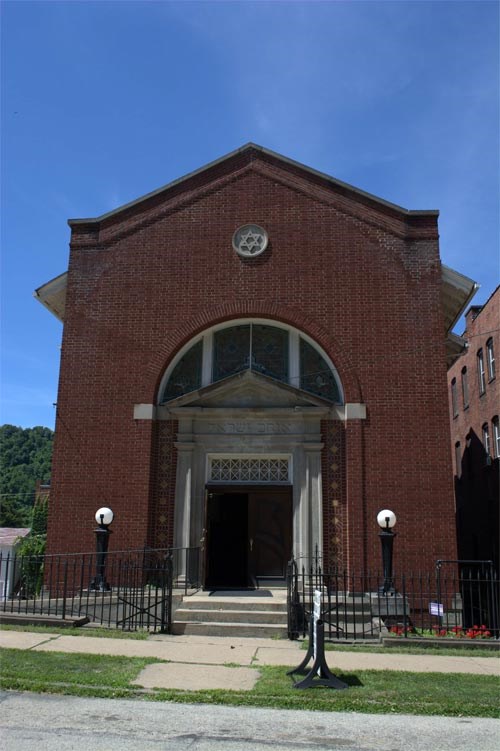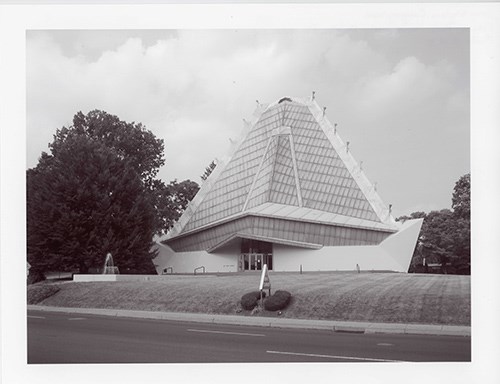The National Register of Historic Places is the official list of the Nation's historic places worthy of preservation. Authorized by the National Historic Preservation Act of 1966, the National Park Service's National Register of Historic Places is part of a national program to coordinate and support public and private efforts to identify, evaluate, and protect America's historic and archeological resources.
May is Jewish American Heritage Month. The National Register of Historic Places is pleased to promote awareness of and appreciation for the historical accomplishments of Jewish Americans. We showcase historic properties listed in the National Register and National Park units commemorating the events and people that help illustrate Jewish Americans' contributions to American history.
May is Jewish American Heritage Month. The National Register of Historic Places is pleased to promote awareness of and appreciation for the historical accomplishments of Jewish Americans. We showcase historic properties listed in the National Register and National Park units commemorating the events and people that help illustrate Jewish Americans' contributions to American history.

Photograph courtesy of Ohio State Historic Preservation Office
Highlighted Properties:
Sons of Jacob Cemetery, Garske, North Dakota
The Sons of Jacob Cemetery is the only permanent physical reminder of the Ramsey County Jewish farming community and the oldest Jewish homesteader cemetery in North Dakota.
The Ambassador, Cincinnati, Ohio
The Ambassador was developed by Jewish businessman Julius Lipsky and several of its early residents were Jewish households. The Ambassador reflects the broad pattern of suburban development associated with Avondale's second major wave of construction during the early 20th century associated with the migration of the Jewish professional class from Cincinnati's West End to Avondale.

Photograph courtesy of Pennsylvania State Historic Preservation Office
Previously Highlighted Properties:
Sons of Israel Synagogue, South Bend, IndianaWas an early house of worship for an orthodox congregation composed of a number of Jewish immigrants to the area. The building is significant due to the unique Romanesque Revival architecture with its congregants' ethnic roots reflected in its details and styling.
Temple Ohave Israel, Brownsville Borough, Pennsylvania
In addition to providing religious services for Brownsville's Jewish community, Temple Ohave Israel also cultivated and strengthened the Jewish community by educating the community's children and by providing meeting space for social organizations, such as the Hebrew Ladies Aid Society; a Jewish Boy Scout troop; and the Co-ed Club, a Jewish youth club.
Jewish Center of Coney Island, Brooklyn, New York
The Jewish Center of Coney Island, built between 1929 and 1931, is significant under criterion A for its association with the Jewish Community Center movement of the late 1910s and 1920s and as an indication of the development of Brighton Beach, at the southern edge of Brooklyn, as a new, middle-class residential neighborhood with a substantial Jewish population in the 1920s.
Hyde Park, Burkeville, Virginia
The property's successful operation provided the opportunity for agriculturally skilled Jewish refugees from Nazi Germany to Immigrate to America and expand the farm's productivity during the 1930s and early 1940s.
St. Thomas Synagogue--Beracha Veshalom Vegemiluth Hasadim
Charlotte Amalie, Virgin Islands
The Synagogue of St. Thomas, called Beracha Veshalom Vegemiluth Hasidim (Blessing and Peace and Acts of Piety), built in 1833 in Charlotte Amalie on St. Thomas Island, is the second oldest and longest in continuous use synagogue in the United States. The congregation, originally Spanish and Portuguese Sephardic Jews, came to the Caribbean Basin to finance trade between the Europe and the New World. Commonly referred to as the St. Thomas Synagogue, it is located on the southeastern slope of Denmark Hill in one of the older residential areas of Charlotte Amalie, St. Thomas, U.S. Virgin islands, to the north of the town’s main business district.
New England Hebrew Farmers of the Emanuel Society Synagogue and Creamery Site
Village of Chesterfield, Town of Montville, Connecticut
The New England Hebrew Farmers of the Emanuel Society Synagogue and Creamery Site, located in the town of Montville, Connecticut, was listed in the National Register of Historic Places on February 28, 2012 for both its historical and archaeological significance. The site includes the foundation remains of the synagogue, its associated mikvah, and a stone well, the foundation remains of the former creamery building (later converted into a dwelling and inn), a stone well, a barn, and several retaining walls.
Louis Brandeis House, Barnstable County, Massachusetts
Louis Dembitz Brandeis (1856-1941) was the first Jewish person to serve on the Supreme Court of the United States. Appointed by President Woodrow Wilson to the Supreme Court on January 28, 1916, Louis Brandeis was already nationally known for his progressive views. Due at these views and ethnicity, his appointment aroused a storm of protest among large segments of the nation’s legal establishment. None the less, he was confirmed and took the oath on June 5, 1916. His name first became nationally known with the publication in 1914 of his book Other People’s Money and How the Banker’s Use It, which critiqued corporate power in the early 20th century
Hebrew Orphan Asylum, Baltimore, Maryland
The history of the Hebrew Orphan Asylum site spans nearly 200 years from its beginning in 1815 as “Calverton,” the country home of Baltimore banker Dennis Smith. An 1874 fire destroyed the Calverton mansion, and led to the construction of the present building, which was specifically designed as an orphanage and was dedicated in 1876.

Photograph courtesy of Emily T. Cooperman, Cultural Resource Consulting Group
Designed by local architect, J. Chris Jensen, the Chevra B’nai Yisroel Synagogue reflects the congregation’s orthodox origins in its original design, with later remodeling reflecting the subsequent changes in the congregation’s religious outlook and traditions. The congregation associated with the Chevra B’nai Yisroel Synagogue in Council Bluffs, Iowa, was originally affiliated with Orthodox Judaism, later with Conservative Judaism, and most recently with Reconstuctionalist Judaism.
Jewish Shelter Home, Multnomah County, Oregon The Shelter Home provided the Jewish immigrant district a certain continuity and support –the Shelter Home allowed Jewish children of disrupted family backgrounds a Jewish upbringing which they quite possibly would have missed had they been placed in a state-operated orphanage. In the course of a year, 18 to 20 children would pass through the house; each staying whatever time was necessary. This process was extremely important to the maintenance of Jewish culture and society in South Portland.
Park Circle Historic District (Baltimore, MD)
Park Circle Historic District in Baltimore, Maryland was an early suburban Jewish neighborhood developed when the children of Eastern European immigrants moved from East Baltimore to the city's northwest outskirts, setting the pattern for further expansion of Baltimore's Jewish community to the northwest.
Beth Sholom Synagogue (Elkins Park, PA)
was one of a handful of Wright buildings singled out in 1959 by the American institute of Architects and the National Trust for Historic Preservation
Mill House (Orange County, NY)
In 1710, Luis Moses Gomez, the son of a well-to-do Jewish immigrant merchant, and a member of one of the foremost Jewish families in colonial New York, began to purchase land in Ulster and Orange Counties, finally acquiring about 2500 acres. On this tract of land Gomez constructed a stone house, the original section of the present Mill House, to accommodate his fur trading business with the American Indians.
Albert Einstein House (Princeton, New Jersey):
Albert Einstein, considered the greatest physicist of all time and named in 1999 Time Magazine’s Person of the Century, was born to Jewish parents in Ulm, Germany in 1879. Although most famous for his theory of relativity (and specifically mass-energy equivalence, E=mc²), he was also known as an international advocate of peace, human rights and an early supporter of a homeland for the Jewish people.
Historic Synagogues of Connecticut:
In 1818 a constitutional convention in Connecticut resulted in the disestablishment of the Congregational Church as a tax-supported institution. At this time less than a dozen people of the Jewish faith were known to live in Connecticut. Jewish public worship was not permitted in Connecticut until 1843.
Learn More:
National Register of Historic Places Flickr photograph tagged for Jewish HistoryNational Park Service Units:
- Touro Synagogue National Historic Site In Rhode Island
- Lower East Side Tenement Museum National Historic Site in New York The heart of the museum is the historic tenement, home to an estimated 7,000 people from over 20 nations between 1863 and 1935 many of them Jewish.
- David Berger National Memorial, in Beachwood, Ohio This site honors the memory of David Berger, an American citizen who was one of 11 Israeli athletes killed at the 1972 Olympic Games in Munich, Germany
Jewish Heritage Month - Federal Government-wide portal
Last updated: May 6, 2022
